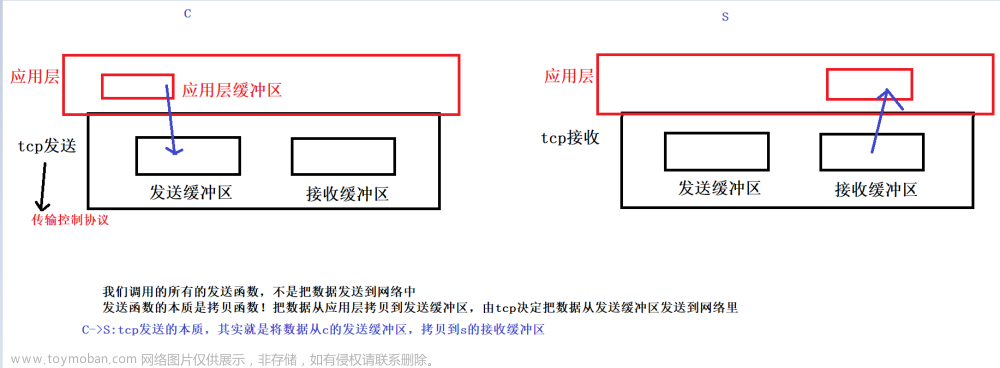1. 背景
在部分使用场景(如元数据驱动,后台接口仅返回序列化后的json字符串,前端需要根据每个字段在前端呈现),需要手动设置字段的长度。通常情况下,框架是有默认的顺序,如 jackson 默认使用字段声明的顺序, fastjson 默认是使用字典序。在这种业务场景下,就需要我们可以手动指定序列化后字段的顺序。
这里分别使用 jackson 和 fastjson 两种框架。
2. 使用 jackson
使用注解 @JsonPropertyOrder 声明具体的字段顺序。如 @JsonPropertyOrder({"city", "age", "name"}) 。具体参考实例程序。
pom依赖:文章来源:https://www.toymoban.com/news/detail-725119.html
<dependency>
<groupId>com.fasterxml.jackson.core</groupId>
<artifactId>jackson-databind</artifactId>
<version>2.14.3</version>
</dependency>
Java 验证程序:
package com.ysx.utils.json.jackson;
import com.fasterxml.jackson.annotation.JsonPropertyOrder;
import com.fasterxml.jackson.core.JsonProcessingException;
import com.fasterxml.jackson.databind.ObjectMapper;
import lombok.Getter;
import lombok.Setter;
import org.junit.jupiter.api.Assertions;
import org.junit.jupiter.api.DisplayName;
import org.junit.jupiter.api.Test;
/**
* @author youngbear
* @email youngbear@aliyun.com
* @date 2023-10-15 22:15
* @blog <a href="https://blog.csdn.net/next_second">...</a>
* @github <a href="https://github.com/YoungBear">...</a>
* @description
*/
@DisplayName("使用jackson设置序列化时字段的顺序")
public class JsonFieldOrderTest {
@Test
@DisplayName("默认顺序:字段声明的顺序")
public void defaultOrderTest() throws JsonProcessingException {
Student1 student = new Student1();
student.setName("John");
student.setAge(25);
student.setCity("Beijing");
ObjectMapper objectMapper = new ObjectMapper();
String json = objectMapper.writeValueAsString(student);
// {"name":"John","age":25,"city":"Beijing"}
Assertions.assertEquals("{\"name\":\"John\",\"age\":25,\"city\":\"Beijing\"}", json);
}
@Test
@DisplayName("使用@JsonPropertyOrder指定顺序")
public void userJsonPropertyOrderTest() throws JsonProcessingException {
Student2 student = new Student2();
student.setName("John");
student.setAge(25);
student.setCity("Beijing");
ObjectMapper objectMapper = new ObjectMapper();
String json = objectMapper.writeValueAsString(student);
// {"city":"Beijing","age":25,"name":"John"}
Assertions.assertEquals("{\"city\":\"Beijing\",\"age\":25,\"name\":\"John\"}", json);
}
@Getter
@Setter
public static class Student1 {
private String name;
private Integer age;
private String city;
}
@Getter
@Setter
@JsonPropertyOrder({"city", "age", "name"})
public static class Student2 {
private String name;
private Integer age;
private String city;
}
}
3. 使用 fastjson
有两种方法,
- 使用 @JsonField 的 ordinal 指定顺序,数越小优先级越高,默认为0。
- 使用@JSONType的orders属性指定字段顺序
详细参考实例程序:
pom依赖:
<!-- https://mvnrepository.com/artifact/com.alibaba/fastjson -->
<dependency>
<groupId>com.alibaba</groupId>
<artifactId>fastjson</artifactId>
<version>2.0.41</version>
</dependency>
程序:文章来源地址https://www.toymoban.com/news/detail-725119.html
package com.ysx.utils.json.fastjson;
import com.alibaba.fastjson2.JSON;
import com.alibaba.fastjson2.annotation.JSONField;
import com.alibaba.fastjson2.annotation.JSONType;
import lombok.Getter;
import lombok.Setter;
import org.junit.jupiter.api.Assertions;
import org.junit.jupiter.api.DisplayName;
import org.junit.jupiter.api.Test;
/**
* @author youngbear
* @email youngbear@aliyun.com
* @date 2023-10-15 21:28
* @blog <a href="https://blog.csdn.net/next_second">...</a>
* @github <a href="https://github.com/YoungBear">...</a>
* @description
*/
@DisplayName("使用fastjson设置序列化时字段的顺序")
public class JsonFieldOrderTest {
@Test
@DisplayName("默认顺序:字典序")
public void defaultOrderTest() {
Student1 student = new Student1();
student.setName("John");
student.setAge(25);
student.setCity("Beijing");
String json = JSON.toJSONString(student);
// {"age":25,"city":"Beijing","name":"John"}
Assertions.assertEquals("{\"age\":25,\"city\":\"Beijing\",\"name\":\"John\"}", json);
}
@Test
@DisplayName("使用@JsonField的ordinal指定顺序,数越小优先级越高,默认为0")
public void userJsonFieldOrdinalTest() {
Student2 student = new Student2();
student.setName("John");
student.setAge(25);
student.setCity("Beijing");
String json = JSON.toJSONString(student);
// {"name":"John","age":25,"city":"Beijing"}
Assertions.assertEquals("{\"name\":\"John\",\"age\":25,\"city\":\"Beijing\"}", json);
}
@Test
@DisplayName("使用@JSONType的orders属性指定字段顺序")
public void userJsonPropertyOrderTest() {
Student3 student = new Student3();
student.setName("John");
student.setAge(25);
student.setCity("Beijing");
String json = JSON.toJSONString(student);
// {"name":"John","age":25,"city":"Beijing"}
Assertions.assertEquals("{\"name\":\"John\",\"age\":25,\"city\":\"Beijing\"}", json);
}
@Getter
@Setter
public static class Student1 {
private String name;
private Integer age;
private String city;
}
@Getter
@Setter
public static class Student2 {
@JSONField(ordinal = 1)
private String name;
@JSONField(ordinal = 2)
private Integer age;
@JSONField(ordinal = 3)
private String city;
}
@Getter
@Setter
@JSONType(orders = {"name", "age", "city"})
public static class Student3 {
private String name;
private Integer age;
private String city;
}
}
源代码github地址
到了这里,关于设置Json序列化时字段的顺序的文章就介绍完了。如果您还想了解更多内容,请在右上角搜索TOY模板网以前的文章或继续浏览下面的相关文章,希望大家以后多多支持TOY模板网!








